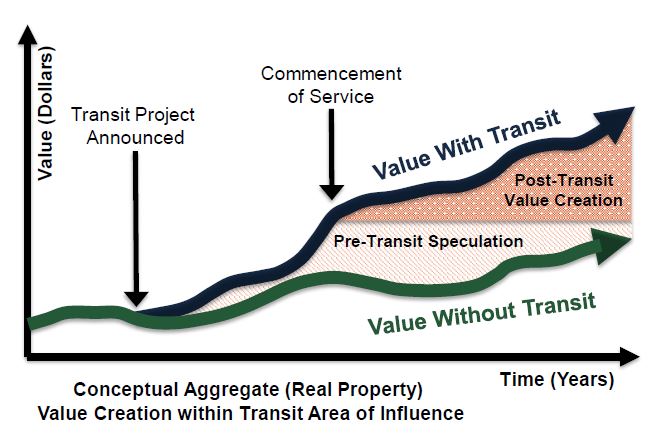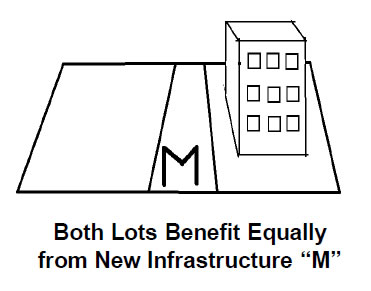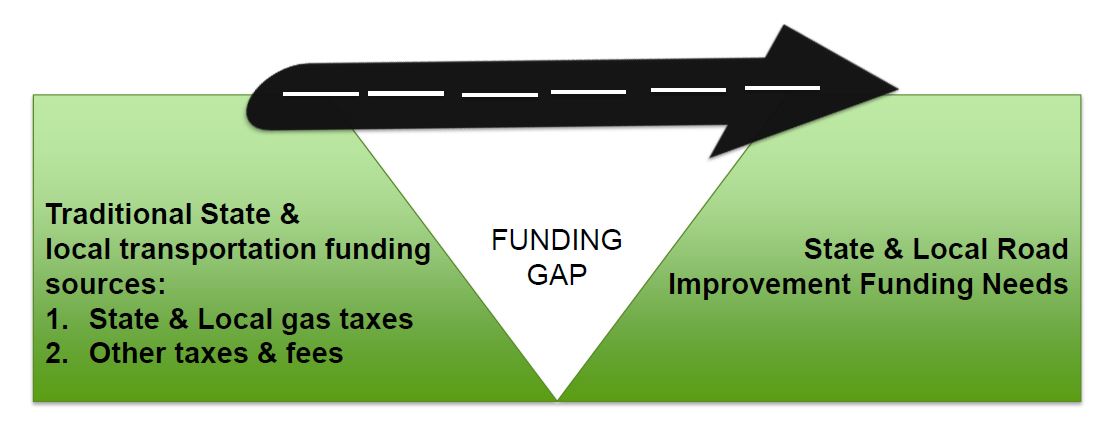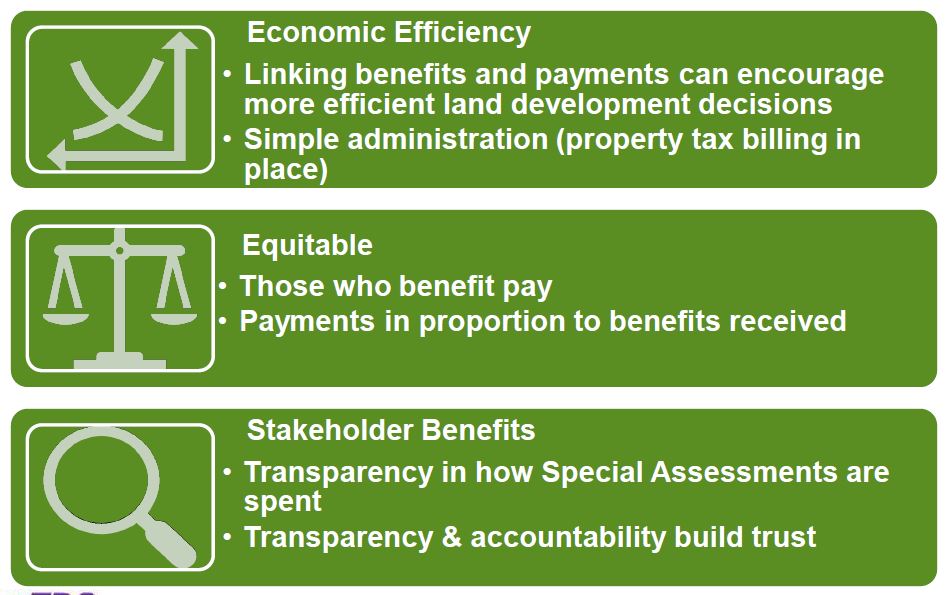« PreviousNext »
1. Overview of Special Assessments
What is a Special Assessment?


Special Assessments are also called: Special Assement Districts,Benefit Assessment Districts, Local Improvement Districts, Transportation Improvement Districts, Community Improvement Districts, Community Improvement Districts, Neighborhood Improvement Districts.
Overview: Concept behind SADs
Transportation enhances property values
- New or improvedinfrastructure providesspecial benefits tonearby properties.
- Access to transportationinfrastructure createshigher land values.
- Special assessmentsreturn a portion of thisspecial benefit to thepublic sector thatcreated it.

Infographic representing a timeline of Value with Transit in years from points: Transit Project Announced, Commencement of Service, Pre-Transit Speculation and Post-Transit Value Creation. Financial value with transit trends upwards over time. Value without transit also trends upward but not as much as with transit.
Figure source: Transportation Research Board, TCRP Report 190, 2016.
Financial beneficiaries pay in proportion to benefits received
- Even if a landowner lives elsewhereand never uses the transportationfacilities near his/her property,higher land values provide theowner with a direct benefit.
- Fees based on increased land valuewill be paid by beneficiaries inproportion to the benefits received.

Figure source: R. Rybeck, Funding Long-Term Infrastructure Needs for Growth, Sustainability, and Equity, 2013
Closing Funding Gaps

Efficiency, equity, and stakeholder benefits

Economic Efficiency - Linking benefits and payments can encourage more efficient land development decisions, simple administration (property tax billing in place); Equitable - Those who benefit pay, Payments in proporiton to benefits recieved; Stakeholder Benefits - Transparencey in how Special Assessments are sprent, Transparency and accountability build trust
« PreviousNext »




